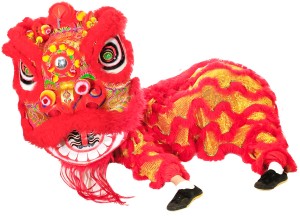Students prepare for Chinese New Year
“I really miss Chinese food now, especially at this time of the year,” said Nancy Lin, a freshman majoring in accounting. “With Chinese New Year right around the corner, I could use some spicy xiangchang right now.”
It’s a sentiment that seems to be echoed by many Asian international students and Asian-American students, leaving them nostalgic for their native food and traditions as the holiday arrives today.
“There are a lot of misconceptions about Chinese New Year in Los Angeles,” said Ryan Chen, a freshman majoring in computer engineering. “For example, lots of non-Chinese think that Gong Hay Fat Choy is how Chinese people say, “Happy New Year,” but in reality, that’s just how Cantonese speakers pronounce it. Most Chinese people, who speak Mandarin, pronounce it more like Gong Xi Fa Cai.”
With the undergraduate and graduate Asian community at USC now at more than 9,000 members, the diversity within the population, particularly the East Asian cultures, is particularly overlooked.
While the holiday is called Chinese New Year, in reality, almost all of East Asia celebrates the holiday. The name in English comes from the fact that Chinese immigrants were the first large immigrant group to come from Asia to the United States, so the holiday has become attached to China in Americans’ minds.
Korea also celebrates the Lunar New Year, however, called seollal in Korean.
“In Korea, I would go home to see family, usually visiting my mom’s side for lunch and my father’s side for dinner,” said William Han, a freshman majoring in biomedical engineering. “I would spend a lot of time playing traditional Korean games with my cousins while the adults sat around talking and drinking soju. Seollal is really a time to spend with family. However, since I’ve moved to the states, all my relatives are in Korea, and it isn’t really possible for my family to go back, so usually we just sit at home at play a few games amongst ourselves.”
Many other Korean and Korean-American students also expressed their disappointment that they would not be able to go back home to spend time with their family.
“For me, seollal is about eating dduk gook with family,” said Eliot Kim, a Korean-American freshman majoring in economics. Dduk gook is rice cake soup that is traditionally eaten on New Year’s Day. It is a thick broth composed of rice cake, egg, marinated meat and seaweed.
“I also remember going to do jesa and going to the cemetery as well,” Kim said. Traditionally, Koreans go to the cemetery during Lunar New Year to pay respect to the deceased, and the term jesa refers to this tradition.
Many of the Chinese students at USC also miss the cuisine native to the holiday. Northern Chinese people traditionally eat jiaozi, a type of dumpling on the day before New Year’s, whereas southern Chinese people eat fish and chunjian, a DIY-style roll with meat and fresh vegetables, as a sort of Asian fajita. Different areas of China always eat different foods that are special to that region.
“I always eat spicy meat and spicy sausage on New Year’s, as well as many different cuts of pig meat,” Lin said. Lin hails from the Sichuan province, an area of China well-known for its heavily spice-infused dishes.
Many Chinese students also miss the firecrackers and other forms of celebration. The act of setting off firecrackers is referred to as fangbianpao in Mandarin.
“I miss setting off long strings of firecrackers back home,” said Cheney Zhong, a freshman majoring in electrical engineering. “Back home in Beijing, on New Year’s Eve and New Year’s Day, there are always firecrackers being set off in the streets. Sometimes it’s so loud that it’s pretty much impossible to sleep.”
In Chinese culture, it is also customary to stay up all night on New Year’s Eve until dawn, so that one sees the New Year arise.
“I remember staying up through the night with my family, talking and messing around with my cousins and eating jiaozi all the time,” said Patrick Zhu, a freshman majoring in mechanical engineering.
More recently, it has become commonplace for Chinese people in America to call back home to pay their respects to their parents and relatives, and wish them a happy and prosperous new year.
“I need to call my parents soon to wish them a happy new year,” Zhu said. “Everybody’s on break right now, because we don’t get a Christmas break in China. Our winter break is around New Year’s, so my parents, relatives and friends are all pretty free right now.”
At the end of New Year’s celebration in Chinese culture is yuanxiaojie, or the Lantern Festival. It occurs on the 15th day of the lunar New Year and is a time when children go out with lanterns and play in the streets, while the adults walk around and take in the sights. It is traditional to eat tangyuan on this day, a glutinous rice ball with different fillings on the inside, such as black sesame paste, peanut paste, red bean paste or sugar.
“I could really use some tangyuan right now,” Zhong said. “That’s my favorite New Year’s snack.”
Many of USC’s Asian-American organizations are holding events for the Asian population at USC. For example, the Taiwanese American Organization is providing rides for a group outing to a local Taiwanese hotspot restaurant on Friday at 5:30 p.m.
